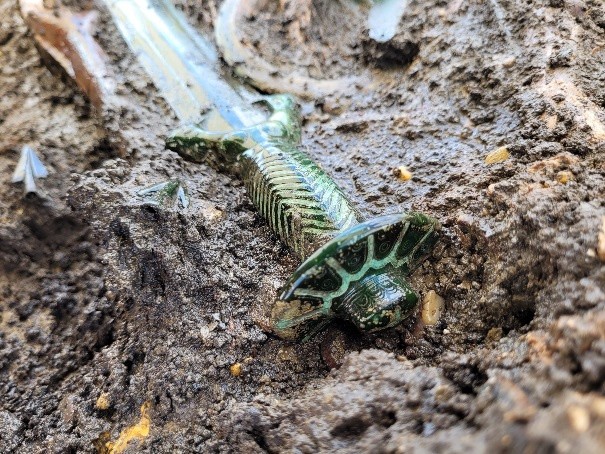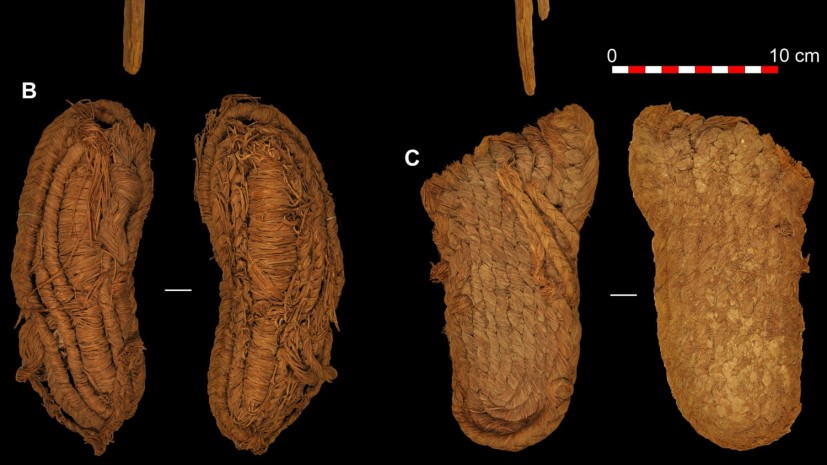Throughout this year, numerous exciting discoveries have been made, most of which revolve around design and the arts. From previously unknown passageways of a very well-known archaeological structure to solving a niche mystery concerning a legendary 80s hair metal band and their album cover, the findings have been quite a "magical" and hugely intriguing journey.
Thus, to celebrate this year's iteration of humanity's unending endeavor to rediscover itself and its past, below are seven of the most exhilarating archaeological discoveries made in 2023.

Hidden Corridor Discovered in the Great Pyramid of Giza
Since 2017, the Great Pyramid of Giza in Egypt has been the source of some of the most hard-hitting historical revelations. This is in huge part thanks to Cairo University's Scan Pyramids Project which has previously discovered a peculiar "void" within the ancient Egyptian structure.
Their latest discovery? A secret 30-foot corridor was found near the pyramid's primary entrance. The university initiative unearthed this hidden pathway using infrared thermography and cosmic-ray imaging technologies. According to a study published in the Journal "Nature" last March, this finding could help archaeologists determine how exactly the Giza structure was built.
A New Discovery Regarding Da Vinci's 'Mona Lisa'
Leonardo Da Vinci's Mona Lisa is another rich source of mystery. In fact, in the last decade, numerous epoch-changing claims have been thrown around regarding the authenticity of a "second version" of the piece, recently making waves in an Italy exhibition starting last November.
However, one concrete revelation in Da Vinci's 'Mona Lisa' stands tall this year, wherein French and English scientists uncovered a new finding right within the painting's base layer of paint.
Utilizing infrared spectroscopy and X-ray diffraction techniques, the research team behind the discovery found that Da Vinci May have been the first to use a technique that artists like Rembrandt used a century later. The technique utilized a mineral compound known as plumbonacrite, a combination of oil and lead oxides that makes the paint dry faster.
Five-Decade-Long 'Led Zeppelin IV' Album Cover Mystery
Over the decades between the release of "Led Zeppelin IV" from its namesake and iconic '80s metal band, the man depicted in the album cover art has been unknown. That is until a discovery was made by a historian from the University of West England.
That historian, Brian Edwards, uncovered the identity of the man whilst working on separate research for the Wiltshire Museum, where he ran across the legacy picture that the album cover was based on. The mystery man was revealed to be a late Victorian thatcher named Lot Long who was discovered to have been a widower and was 69 years old at the time the picture was taken.
3,000-Year-Old Octagonal Sword in Pristine Condition, Found in Germany
Moving away from the revisiting of old archaeological findings or mysteries, a discovery made in Germany revolves around a 3,000-year-old octagon-shaped sword that is still in amazing condition. The artifact was found still shining within a grave located in the Donau-Ries site in Bavaria.

The sword was accompanied by what is believed to be the human remains of three individuals and was found to not be ceremonial or decorative, and was thought to have been used as a weapon. This conclusion was made because the sword's structure possessed a center of gravity that is commonly found with slashing blades.
Spanish Play in the 1700s Finally Decoded After Centuries Thanks to AI
As reported by CNN, a Spanish play dated in the 17th century had a previously obscured author, that is until Spain's National Library archives utilized AI to transcribe over 1,300 anonymous texts. The playwright was revealed to have been Felix Lope de Vega, an author active during the Golden Age of Spain.
The play itself was called "La francesa Laura," or "The Frenchwoman Laura," and was written only years before De Vega died in 1635. It entailed a story about love, jealousy, and the assassination of the French throne's successor after he fell in love with a Count's wife, Laura.
Ancient Woven Sandals, the Oldest Discovered European Shoes
In a study published in the journal "Science Advances" last September, a breakthrough was made by archaeologists from Spain's Autonomous University of Barcelona and Alcalá University regarding 22 ancient woven sandals.

It was previously believed to have been 5,000 years old when it was first carbon-dated in the 1970s, but a new analysis suggests that it is, in fact, a thousand years older. Due to this finding, it can now be more accurately dubbed as the oldest European footwear to have been discovered.
The sandals were made from plant fiber materials and were thought to have been well-preserved due to the dry environment of the Spain cave it was found in. This was found alongside other weaved goods.
18th Century French Love Letters, Read for the First Time in Centuries
After two and a half centuries, over a hundred love letters that were originally intended to be read by 18th-century French sailors were found in the National Archives in London. The historian who found them was Renard Moreuix, a professor at Cambridge University.
According to the professor, he was the first set of eyes to have read the letters since it was written. This is because he discovered that the letters never got to their intended recipients as the French sailors were seized by the Royal Navy of Britain amidst the Seven Years' War. Moreuix also said that he only encountered the letters by chance while working on another separate research.
The letters provided a great window into the relationship that people had centuries ago and even offered insights regarding the significance of women's roles in the household and overall society of the time.